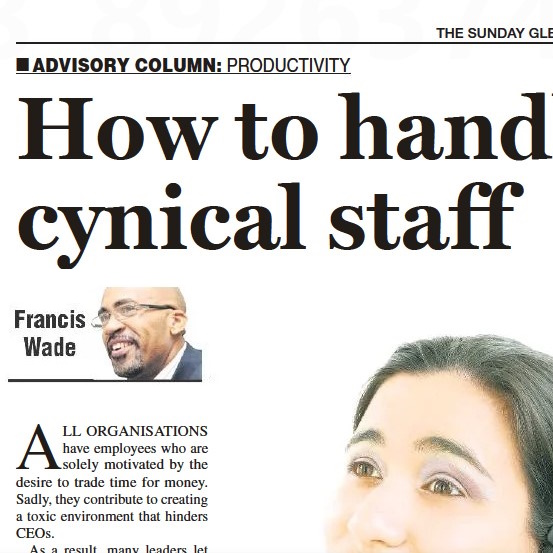In every organisation, there are employees whose primary motivation is simply trading their time for a paycheck. Unfortunately, these individuals contribute to creating a negative and toxic work environment that is detrimental to the leadership team. Negativity takes over the corporate culture.
Is there a way to tap into greater motivation among your staff? As a C-Suite executive or board member, can you do more to provide your employees with a chance to discover meaning in their work?
One surprising revelation for many first-time managers is the prevalence of cynicism among their former, non-supervisory colleagues. In some cases, the majority of the workforce can be deeply cynical, and their negative outlook can be contagious.
Over time, this pervasive cynicism erodes a sense of purpose in the workplace, leaving only the newly hired employees with a glimmer of enthusiasm. Unfortunately, even these newcomers often lose their initial spark after a few months.
In response to this lack of meaning at work, employees may seek fulfilment in other areas of their lives, such as social media, gaming, religion, family, hobbies, vacations, side-hustles, or even consider resignation or migration. A handful may even end up feeling depressed.
However, it’s essential to view these responses as a positive sign. They reflect a fundamental human desire for a purposeful life, a concept echoed in Viktor Frankl’s book “Man’s Search for Meaning” and the movie “Life is Beautiful.”
Regrettably, many CEOs fail to acknowledge this deep-seated need and struggle to connect with their staff’s deeper aspirations. Here are some critical steps to address this challenge effectively.
1. Lead with Bold, Inspiring Goals
CEOs are often successful in inspiring their close C-Suite colleagues who naturally exhibit high self-motivation. However, there’s a tendency for a disconnect to occur with employees at lower levels, which can lead to a perception of a gap.
However, some CEOs have realised that they share the same desire for making a difference as their employees. When people at all levels feel frustrated due to thwarted aspirations, it leads to inaction. By contrast, rallying the organisation around Big Hairy Audacious Goals (BHAGs) is a powerful way to ignite engagement at every level. Without such ambitious goals, you risk settling for a business-as-usual approach.
However, not just any BHAG will do. Goals like “double profits at all costs” may meet the criteria but lack deep meaning to most. In fact, the world now demands holistic collections of BHAGs.
Case in point: the United Nations’ 17 Sustainable Development Goals (SDGs). These multi-pronged commitments address the interests of multiple stakeholders simultaneously.
This approach works even when individual goals are average. They only achieve BHAG status in unison, making them more attractive, but also more difficult.
2. Embrace Credible BHAGs
———
Thankfully, these goal collections tend to be more sustainable as they take into account multiple perspectives. This boosts their credibility a little.
But, this is only the beginning. The SDGs are currently facing the type of problem that arises when goals are combined. They consist of 17 goals and 169 targets and were established in 2015. People doubt the feasibility of their overly ambitious vision for 2030.
It’s unsurprising that they are completely off-course. They resemble more of a wish-list rather than a serious commitment. Countries have converted the project into a perfunctory “check-the-box” exercise in response.
Yet, this did not happen in the past. In 2006, Collins and Porras introduced the term “BHAG” and people were inspired by the announcement of one audacious goal.
Regrettably, that is no longer the case. Today, the overall aspiration must be credible in order to have significance. This is the elevated standard you must achieve as an executive.
And now, we face another hurdle in our journey.
3. Integrate Strategy and BHAGs
In organizations that embrace BHAGs, it’s essential to ensure there’s a concrete strategic plan that accompanies these goals. The SDGs face a similar challenge. Employees and stakeholders now demand a clear, detailed pathway to achieve these significant goals.
In summary, take your collective BHAGs, make them both meaningful and credible, and use them as a catalyst to kick-start your strategic planning process. This approach will bring your ambitions down to a realistic level, even for the skeptics.
In today’s world, where millennials are actively seeking purpose in their work, failing to provide a sense of meaningful action can be a disservice. If you’re not prepared to embrace these new approaches and provide a sense of purpose, it might be time to consider a transformation or find a new path in leadership.
This article was inspired by a prior column in the Jamaica Gleaner.

